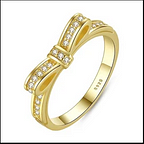In almost the same manner that effective user experience design analyses how individuals feel about services and goods and responds to their requirements, good space design does so as well. When designing physical environments, we must examine where and how individuals spend their time, what tasks they engage in inside that place, and the order in which they engage in those activities. Colors, textures, ambiance design as well as ergonomics are all important aspects of space design.
Are you looking for Placemaking urban design experts? Designers have to get a wide range of talents to make people feel comfortable in physical settings, including service design, experience design, ergonomics, and, ideally, architectural design skills. These fields use comparable methodologies and approaches, as well as comparable deliverables.
Straightforward and engaging experiences are the goal of design
We must keep in mind that individuals enter space with varying intentions, objectives, and thoughts. Some people will tend to participate, while others will simply pass through. You have to design for brief but effective experiences if you want to connect as many people as practicable. Extended interactions can lead to stronger involvement from the visitors if they are rewarded.
For instance, if you’re designing a congress booth, you need account for varying engagement levels. Give incentives to individuals who are prepared to spend more time in your place, but also impress passers-by so they can depart with a positive impression.
Allow for easy space navigation
When it comes to designing a spatial context, keep in mind that wayfinding is nothing but a series of ordered choices which lead to the desired destination. As a result, it’s critical to develop codified routes with easy and consistent navigation options that everybody can understand. And hiring a competent Wayfinding graphic design professional would be the right way to go.
A trip to the hospital might be nerve-wracking. Clear wayfinding aids, such as landmarks, pedestrian instructions, and trails, and also intuitive iconography, symbols, and language, are critical components for optimizing this experience. All aspects of understanding where you are and effectively travelling to your goal are covered by wayfinding.
The role of an experience designer
The architect and the experience designer collaborate to create design aspects for the venue. They decide how the components will appear and perform after defining the design elements. After then, the developmental phase begins. Experience designers sketch up the plan as well as how the idea will be constructed during development.
